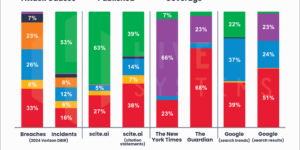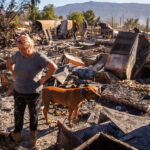Global insured losses in 2019 dropped to an estimated $56 billion, from $93 billion in 2018 and below the annual average $75 billion of the previous 10 years, according to preliminary sigma estimates from Swiss Re Institute.
During the year, total economic losses from natural and man-made disasters fell to around $140 billion from 2018’s price tag of $176 billion, the Swiss Re report said.
Insured losses from natural catastrophes fell to $50 billion from $84 billion in 2018, while insured losses from man-made disasters declined to $6 billion from $9 billion in 2018.
Natural catastrophes accounted for $133 billion of this year’s $140 billion of economic losses, down from $166 billion a year earlier, the report added. The remaining $7 billion came from man-made disasters, compared with $10 billion in 2018.
Tropical cyclone activity in the second half of 2019 pushed overall insurance losses higher after a benign first-half of the year, the report said, adding that a number of smaller and mid-sized loss-generating disaster events (so-called secondary perils) accounted for more than 50 percent of the insured losses.
Globally, more than 11 000 people have died or gone missing in disaster events in 2019, the report confirmed.
Growing Cost of Secondary Perils
Climate change is leading to more frequent and more severe secondary peril events, such as local flooding, torrential rains, prolonged drought, severe wildfires and other extreme weather events.
This year saw heatwaves and droughts, with new temperature highs recorded in several locations around the world – from Europe to Australia, said the report. “Devastating wildfires affected Australia, Indonesia, the US, Canada, the Amazon region and Siberia, among others.”
Devastating floods hit many regions of the world in 2019, such as India, Bangladesh, Nepal, China, the U.S., Europe, Canada and Australia, the report continued.
“Thunderstorms and hailstorms have caused damage to property, vehicles and agriculture in many parts of the world,” Swiss Re said. “Together, secondary perils are estimated to comprise more than 50 percent of this year’s global insured losses from natural catastrophes, demonstrating once again the very significant impact these events can inflict on societies.”
“There is more scientific evidence that climate change impacts the frequency and severity of secondary peril events today, warranting more focus for research. For primary perils like typhoons, science is far less conclusive,” said Martin Bertogg, head Catastrophe Perils at the Swiss Re Institute, in a statement accompanying the report.
“In addition, macro risk factors like rapidly growing populations and property values in exposed areas contribute to the increase in losses resulting from natural catastrophes globally, making past experience a less definite predictor for future losses,” he added.
Source: Swiss Re
*This story ran previously in our sister publication Insurance Journal.




















 Weak La Nina Expected in the Central Region of the U.S. This Winter: NWS
Weak La Nina Expected in the Central Region of the U.S. This Winter: NWS  Four P/C Insurers Are ‘AI Titans’; AI Impact Leaders Revealed: Research
Four P/C Insurers Are ‘AI Titans’; AI Impact Leaders Revealed: Research  Property and Casualty Insurance Trends for 2025
Property and Casualty Insurance Trends for 2025  Wildfire Smoke’s Health Risks Linger Long After Homes Escape Burning
Wildfire Smoke’s Health Risks Linger Long After Homes Escape Burning 







